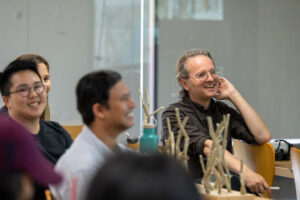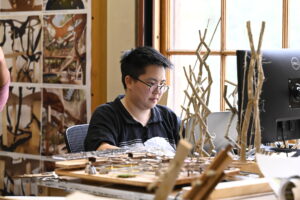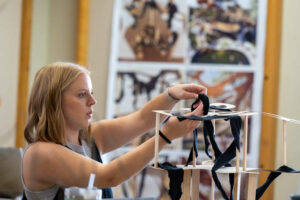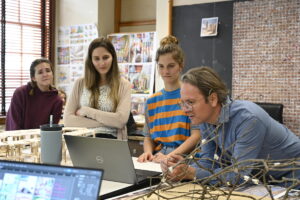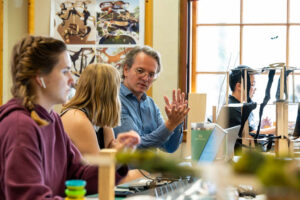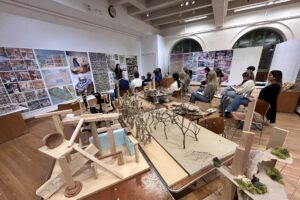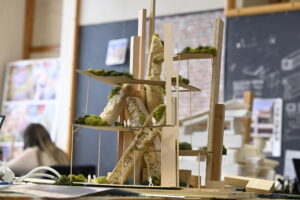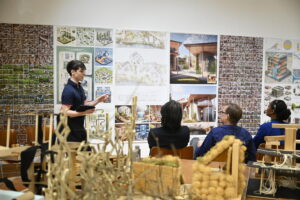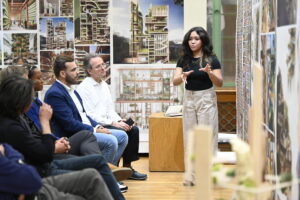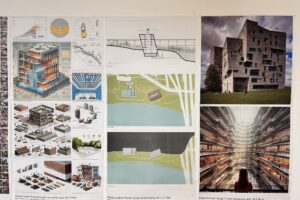With text prompts from students and photos of their architectural models, Daniel Koehler’s Advanced Design students can use AI to generate 50,000 images. Students then can evaluate intuitively where they see value among those thousands of designs.
“Any algorithm, model, API [application programming interface] or platform is designed in particular ways, learns from a particular set of data, assumes a particular kind of workflow, and amplifies distinct assumptions on the application of computation to architecture,” writes Koehler in the syllabus for his class.
The class examines the ways these tools are designed and how they shape architects’ approach. “As architects, it’s crucial that we think critically about the assumptions that underlie these computational models and their applications to architecture,” Koehler writes, “and that we propose alternative workflows and develop inclusive value systems for building design.”
Koehler says AI can increase the degree that architecture is “a humane endeavor,” one that considers humans, the environment, the lifespan of a building, urban design, materials and sustainability. “Architects become participants in society who shape innovation to solve the problems of the future: housing, climate change, sustainability.”
Koehler believes AI will free students to increasingly use emotional intelligence, soft skills, cognitive flexibility, communication, creativity, collaboration and critical thinking in their work.
